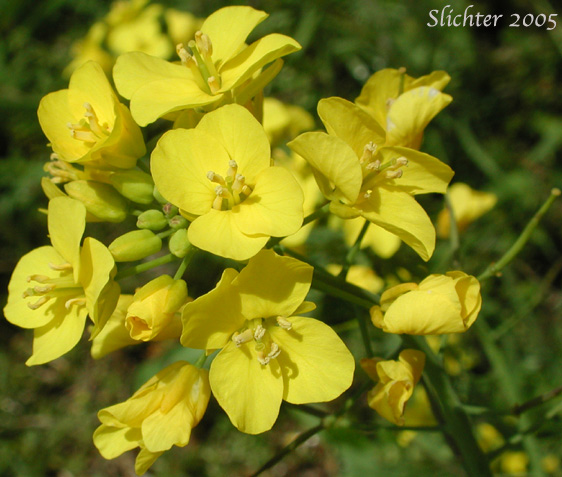
Also known as common mustard or bird rape, field mustard is a common, weedy annual. Plants typically consist of a single erect, simple to branched stem from 20-100 cm high. The herbage of the leaves and stems is typically glaucous or a blue- or gray-green. The few basal leaves are pinnatifid with the terminal lobe much larger than the 2-4 lateral lobes. The basal leaves have short, slender petioles. The stem leaves become sessile upwards on the stem with clasping, heart-shaped bases. The stem leaves range from oblong, ovate-lanceolate, or lanceolate in shape.
The flowers may be found in elongated racemes of numerous flowers. The stout pedicels are ascending and range from 7-25 mm long. The 4 sepals are 3-4 mm long. The 4 yellow petals are each 6-10 mm long. Thge fruits are siliques from 3-7 cm long and 2.5-3.5 mm wide, the siliques gradually tapering from the wider base to the tip. The siliques are erect to spreading upwards.
The young leaves and flowers may be used in salads or eaten raw.
Field mustard is a common plant of moist, disturbed places such as roadsides, vacant lots, fields, farmyards and gardens.
A European species, field mustard is found as an escaped weedy species throughout much of North America.